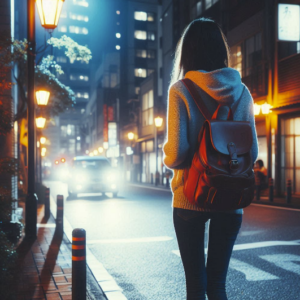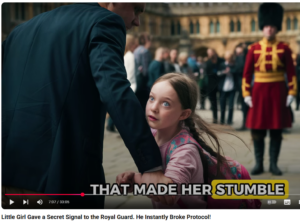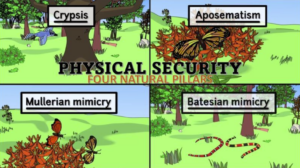On a sunny afternoon last week, I was at a park, watching the kids playing. I noticed a young boy sitting alone on a bench, looking dejected. He was avoiding eye contact and sat with his shoulders slumped. Nearby, another two kids, seemingly more confident, were teasing a smaller kid about four years of age.
This scenario was all too familiar, and it sent a chill down my spine. It had me spiralling back into my own childhood. I wanted to intervene, but I was wary, and I couldn’t see any adults or parents around the kids. Something told me not to hold back.
So, I walked up to the boy sitting dejected on the bench and said, “What’s up, buddy? You okay?”
The boy looked up and nodded, but I could see his lower lip trembling. I glanced around and saw that the other two boys had stopped teasing the smaller kid and they were watching me. I waved to the two older boys and with a slight smile said, “Everything alright?”
That started at me for a moment and then ran off. The little guy ran to his brother sitting on the bench and climbed up beside him.
“Where are your parents?”, I asked.
“Mum should be here soon; I think she is running late”, said the older boy.
“Were those boys teasing you?” I asked.
Both boys looked down into their chests.
There are so many instances like this that happen with young kids. I faced it when I was a child, and I am sure many of you reading this will have too.
The thing with bullying is it’s not always as obvious as you might think. It’s important to recognise when someone is the target of bullying:
- Emotional distress: Pay attention to signs of sadness, anxiety, or fear, especially when it’s persistent.
- Social withdrawal: If someone suddenly becomes isolated and avoids social interactions, it’s a potential sign.
- Academic or work performance changes: Keep an eye on declining grades
- Unexplained injuries: Bruises, cuts, or scrapes without a clear explanation could indicate physical bullying.
- Lost or damaged belongings: Bullies might target personal items as a way to intimidate.
But apart from protecting the bullied ones, it is also important that we identify the bullies. They may not wear a sign that says “bully,” but certain behaviours can give them away:
- Repeated aggression: Bullies engage in harmful actions consistently.
- Power imbalance: They often target those who seem vulnerable or different.
- Lack of empathy: Bullies may not consider others’ feelings or needs.
- Enjoyment in causing harm: Some bullies find satisfaction in hurting others.
- Group Involvement: Bullying can happen individually or as a group effort
As bystanders, we have a vital role to play. Many a time we may witness scenes of bullying and even recognise them as such, but we are not sure what to do or how to approach the situation. I felt like that when I saw the little boy sitting on the bench. But there are things we can and should do to intervene. We can either encourage other people to step in or do so ourselves if it is appropriate. In certain cases, we might need to call an authority – like a school teacher, police or traffic warden to help.
We need to encourage people to step in and help when they witness bullying. To address bullying effectively, we can:
- Create a safe environment: Foster open communication and trust.
- Report and document: Encourage victims and witnesses to report incidents.
- Involve adults: Teachers, parents, or supervisors can play a vital role in addressing bullying.
- Provide support: Offer counselling and emotional support to victims.
- Promote empathy and kindness: Teach the importance of treating others with respect.
Each one of us needs to recognise that bullying is an offence and take steps to address it. We are all responsible for building a kinder and safer world. Just like in the park scenario earlier, by paying attention to our surroundings and acting, it can make a significant difference in someone’s life.
Stepping in and intervening or alerting the appropriate authorities when we witness bullying as bystanders is not just a moral responsibility; it’s necessary. First and foremost, it can prevent further harm. Bullying can have devastating and long-lasting effects on the victim’s mental and emotional well-being, which usually lasts a lifetime. By stepping in, we disrupt the cycle of abuse and provide the victim with immediate relief.
Moreover, bystander intervention sends a powerful message that bullying is unacceptable. It challenges the culture of silence that often surrounds bullying incidents, creating an environment where such behaviour is less likely to thrive. It promotes a sense of community and solidarity, where individuals come together to protect one another.
More importantly, bystander intervention can also help the bully. It can serve as a wake-up call, forcing them to confront the consequences of their actions and potentially encouraging them to seek help or change their behaviour.
We need to ensure that wherever possible, trained professionals can address the situation properly, investigate if necessary, and provide appropriate support to both the victim and the bully. It reinforces the idea that bullying is not just a schoolyard problem but a societal concern that merits serious attention and action.
Teaching young boys and girls to stand up against bullying is important. When we instil the value of standing up for what they believe in from an early age, it becomes a guiding principle that accompanies them throughout life’s journey.
When they learn to protect a smaller child from bullies today, they are laying the foundation for a future where they will stand up against harassment on the streets in five years and as they grow into adults.
Ultimately, this early education and character-building equips them to confront corrupt politicians and industrialists, family members or close friends who may try to take advantage of the young or weak. It will contribute to the restoration of society through exemplary leadership.
Teaching courage and empathy in the face of injustice at a young age empowers our youth to shape a brighter, more just future.
Let’s come together to create a safer world for us all.


